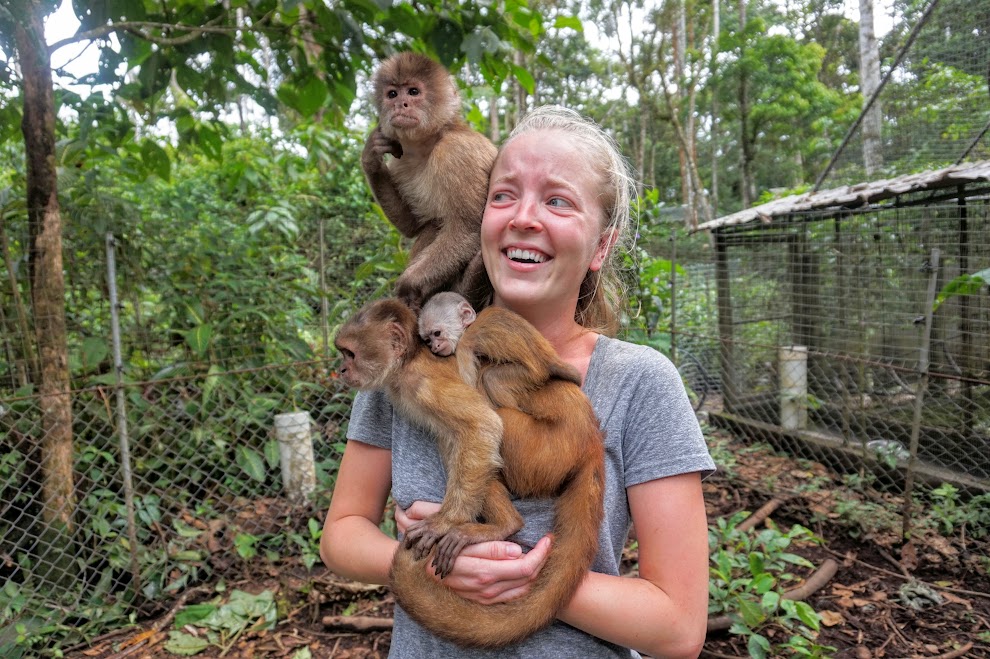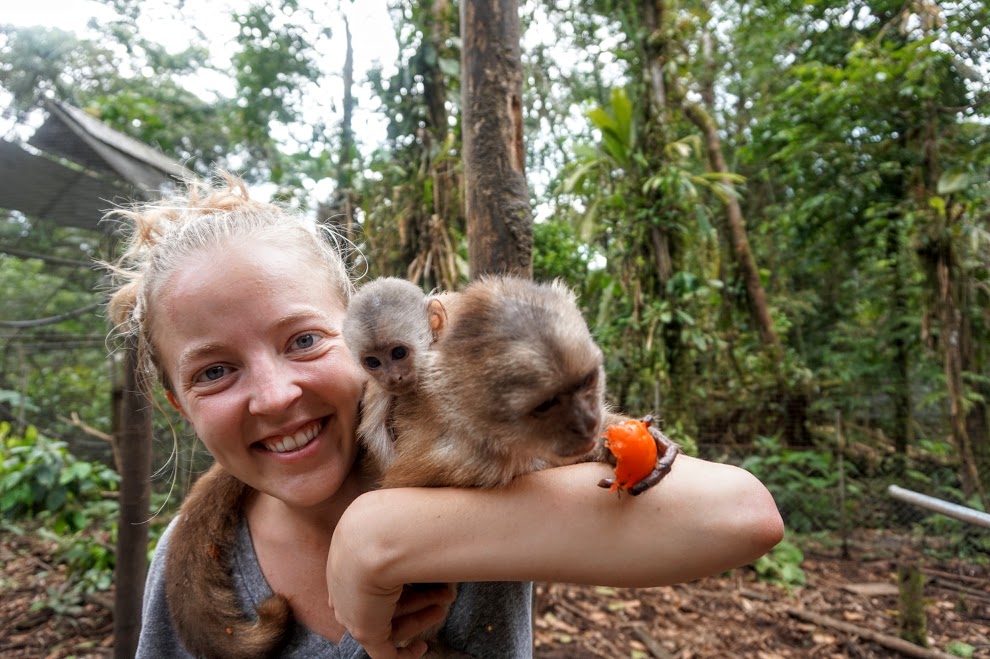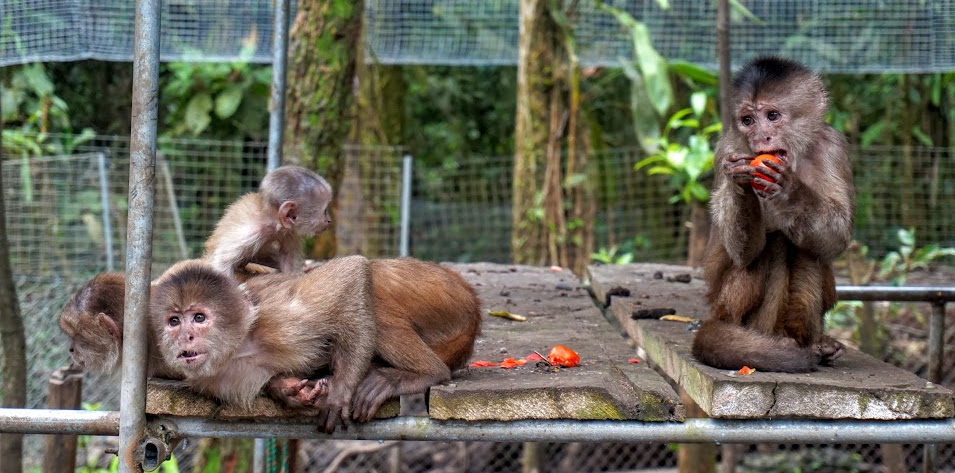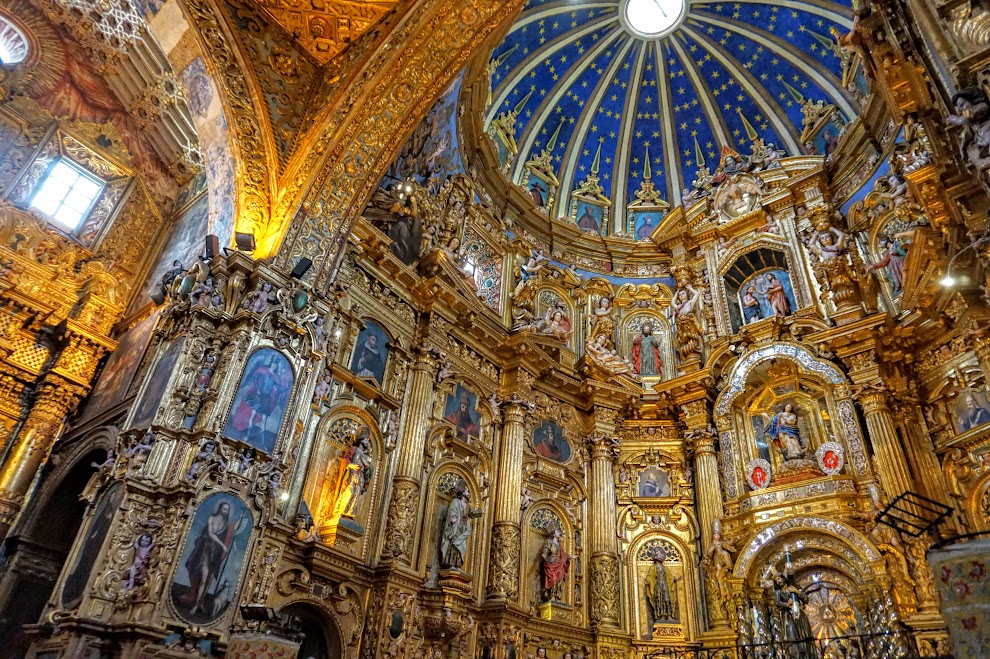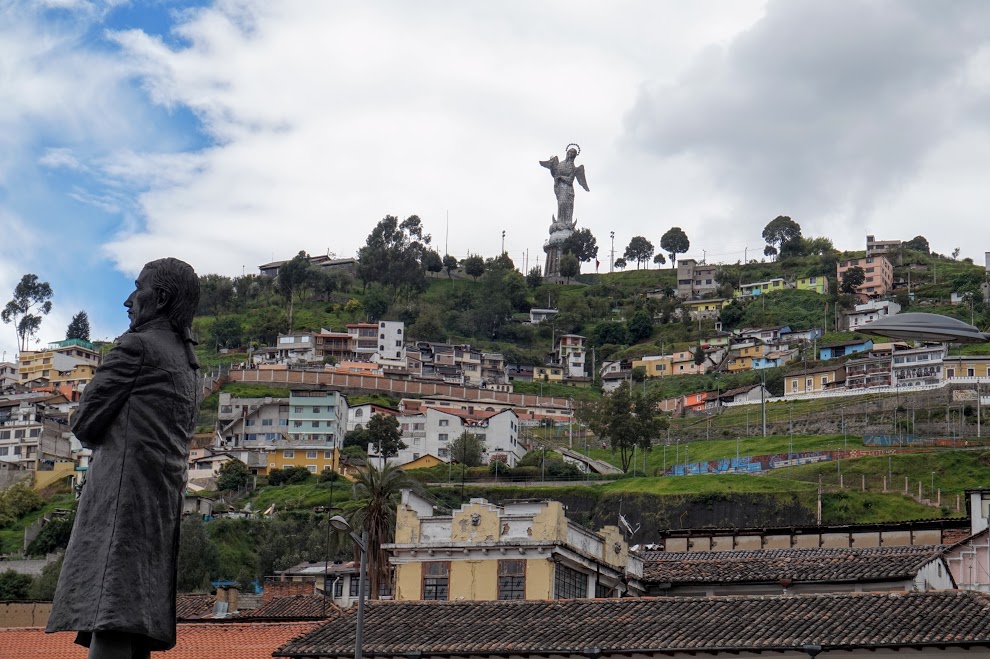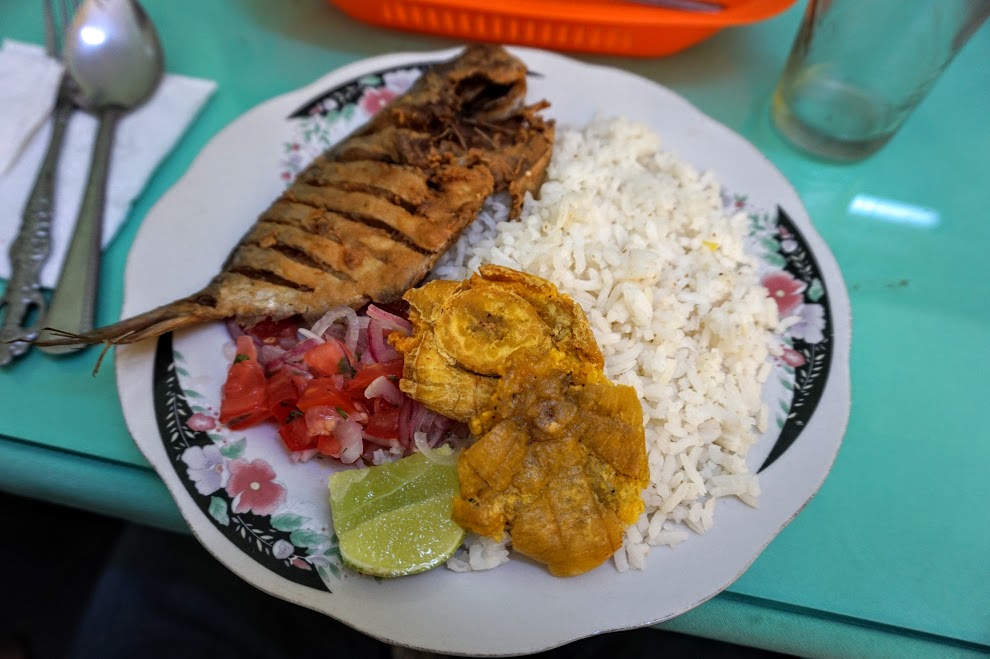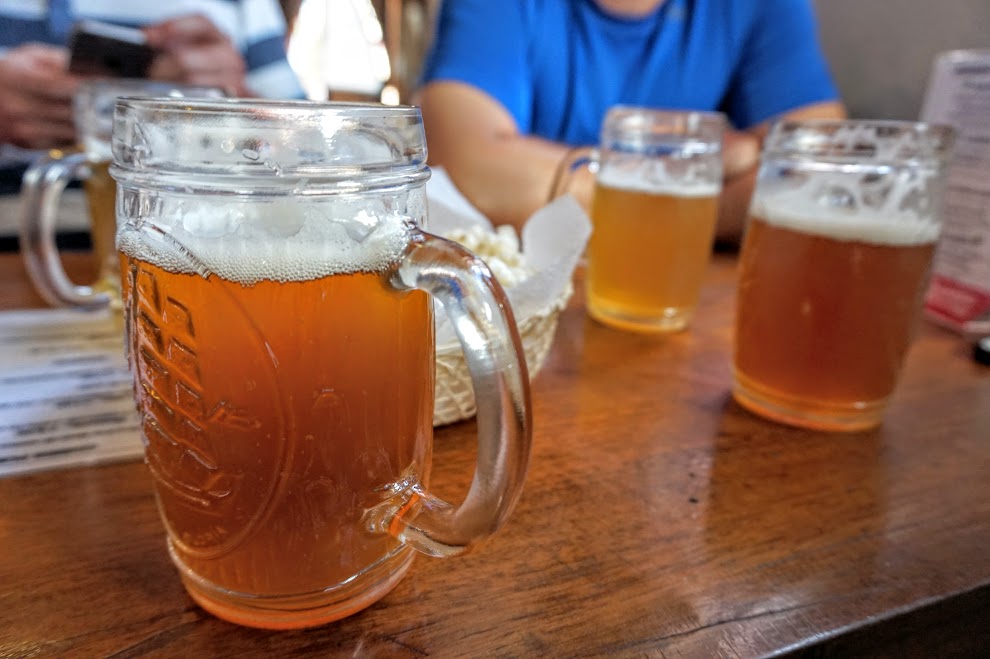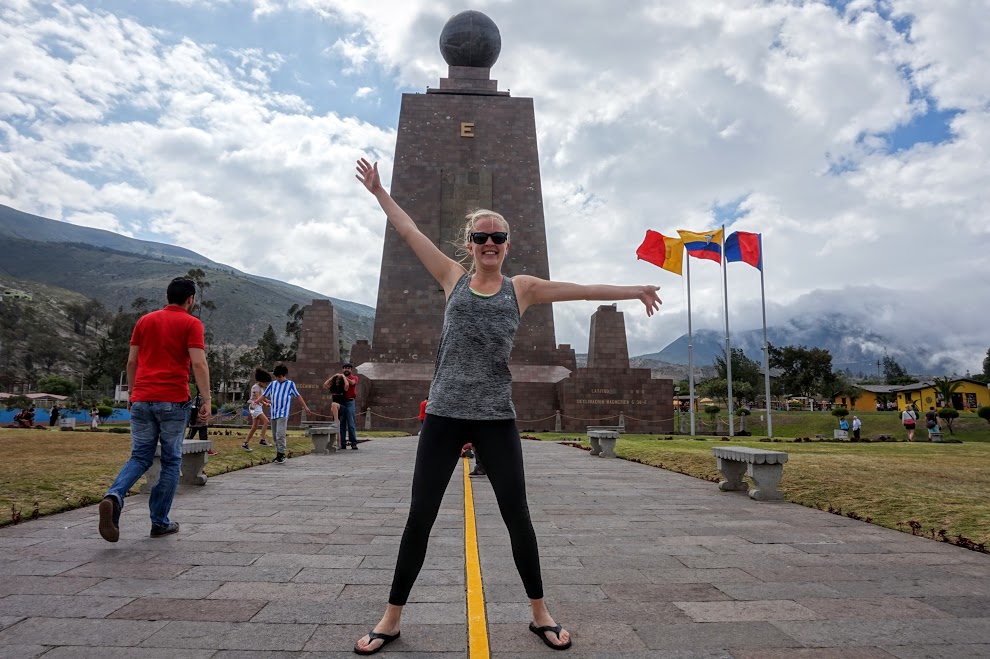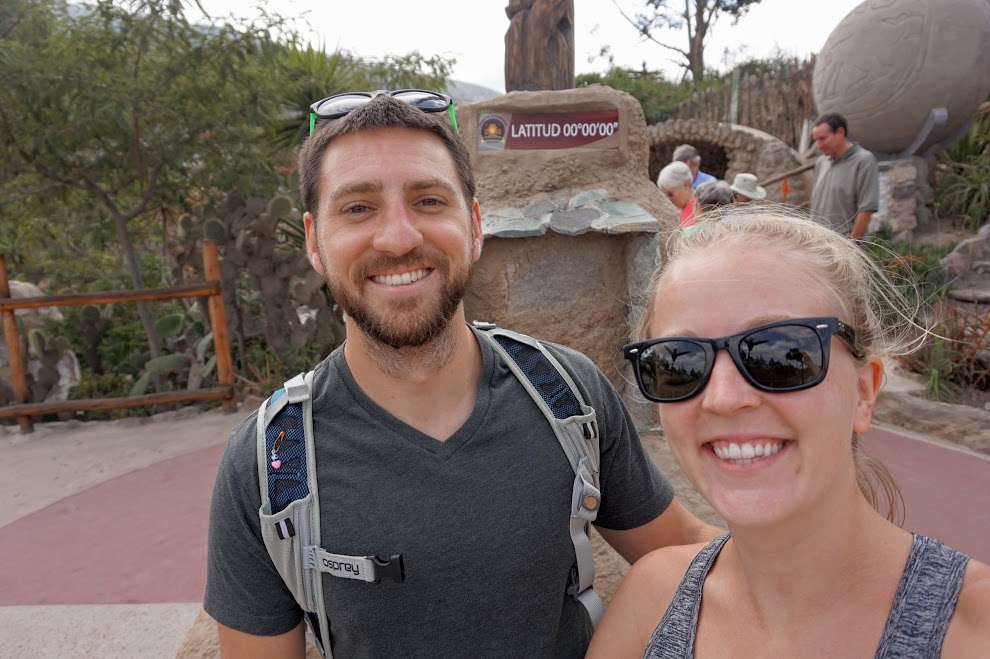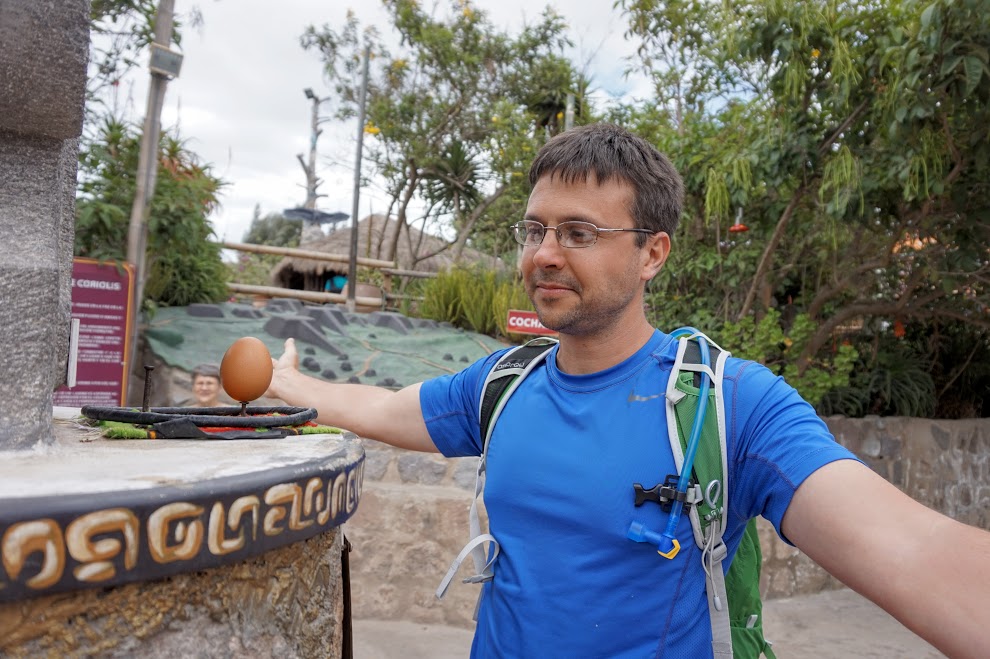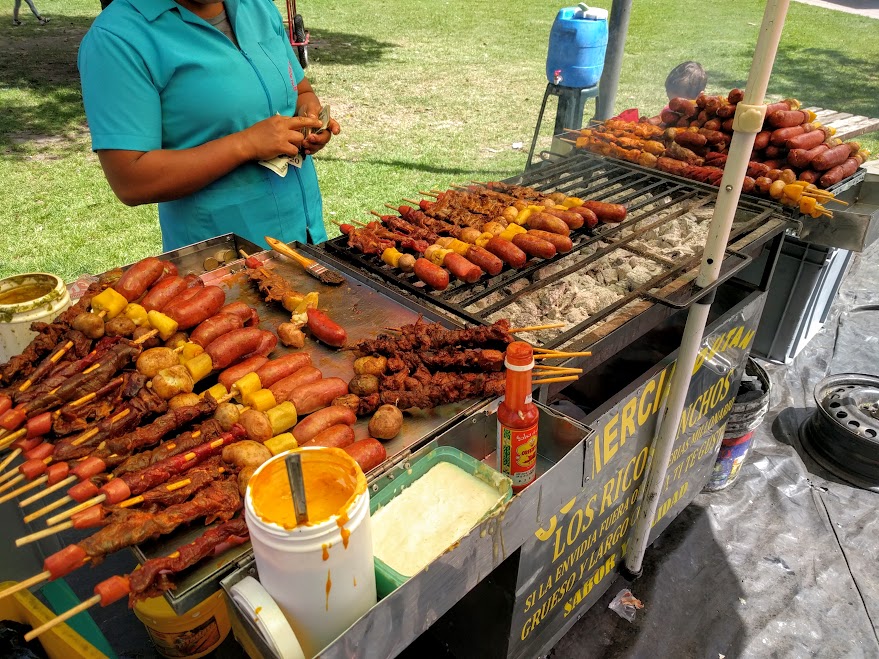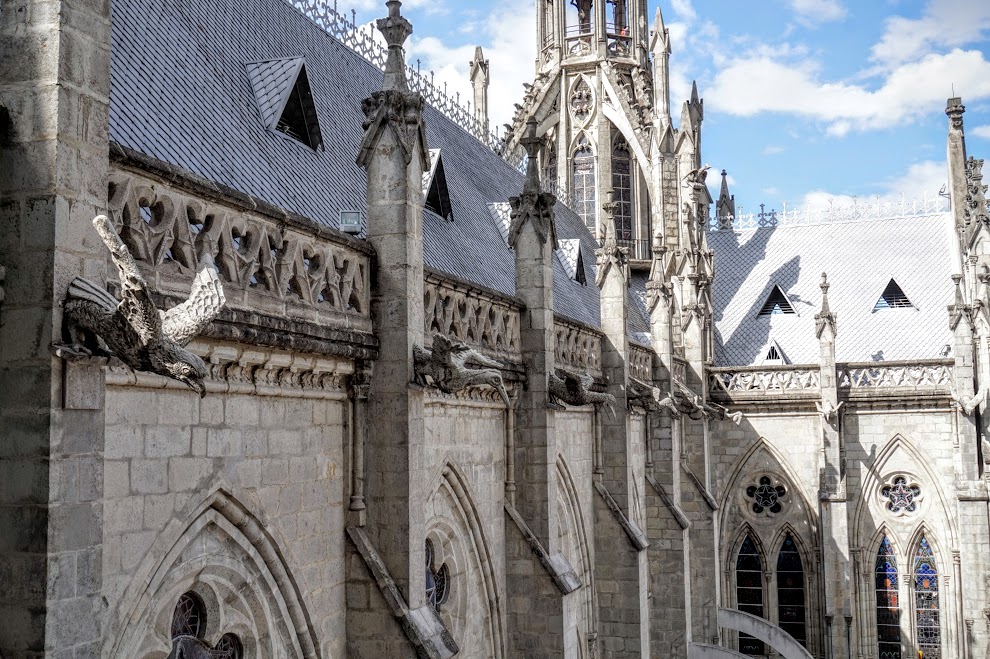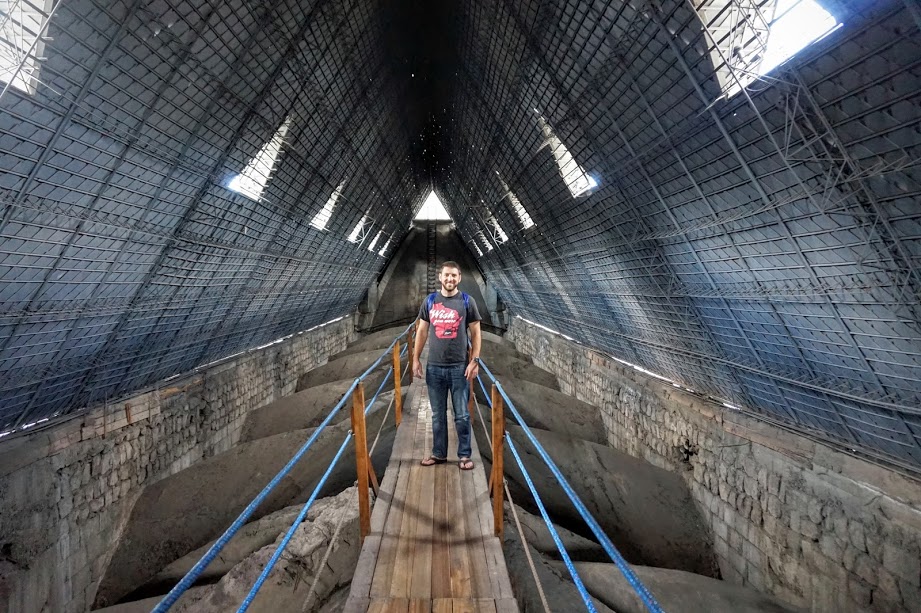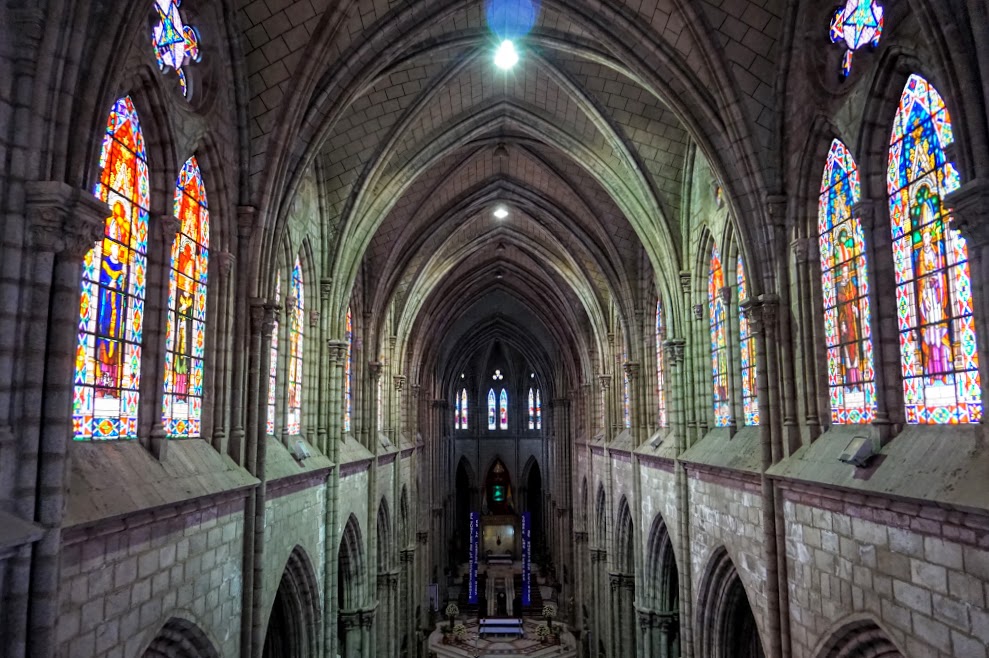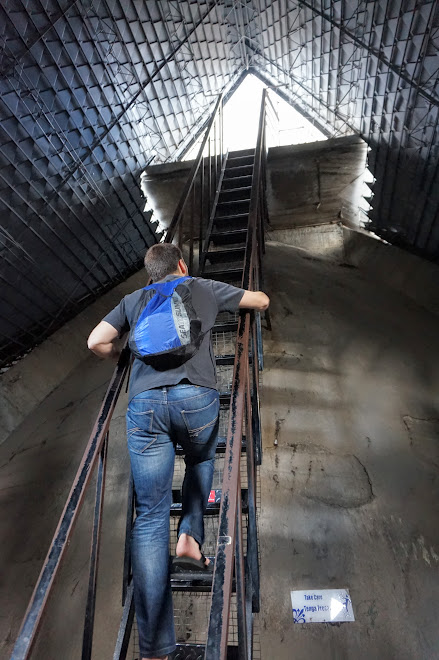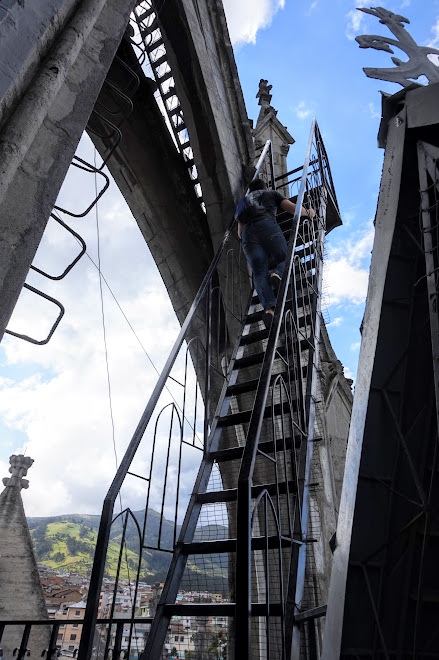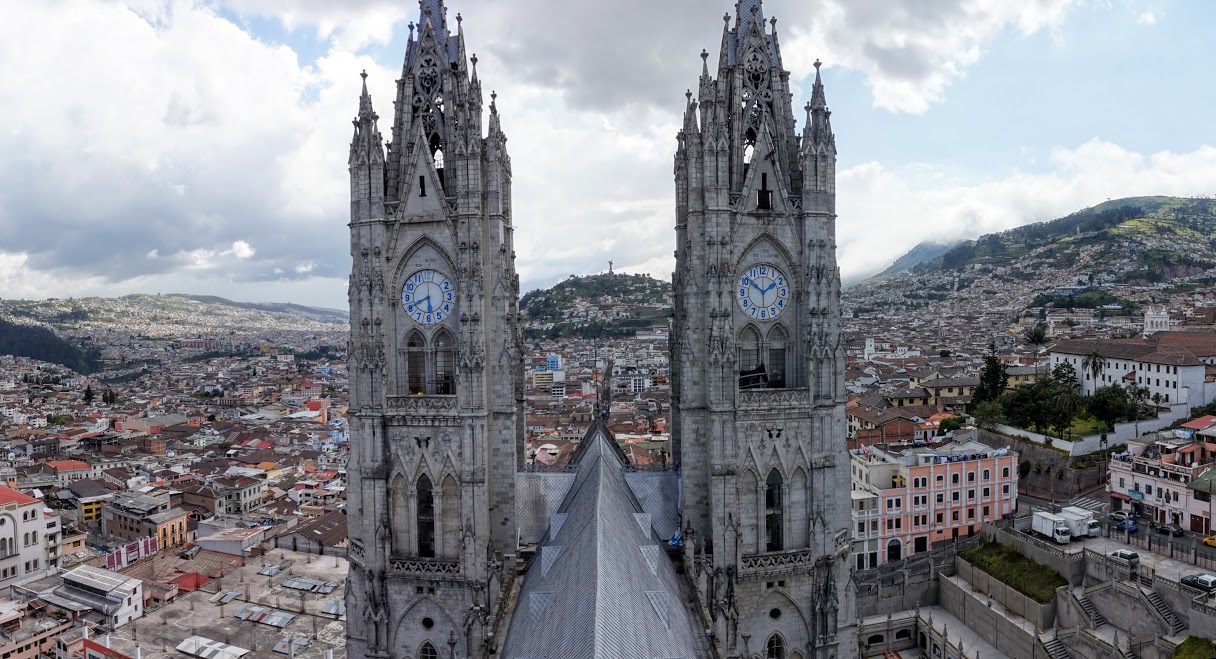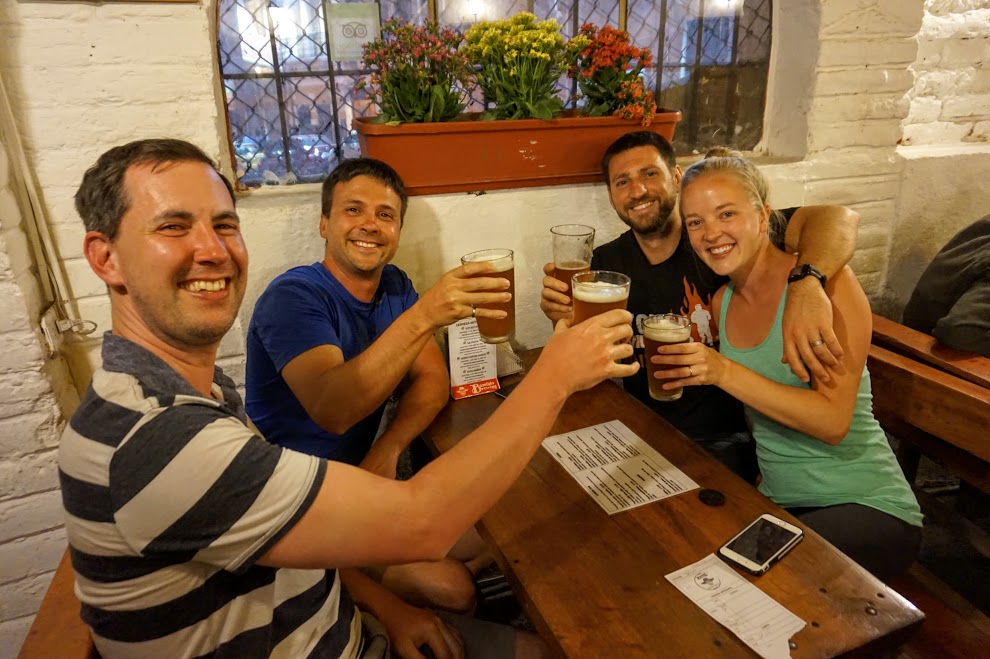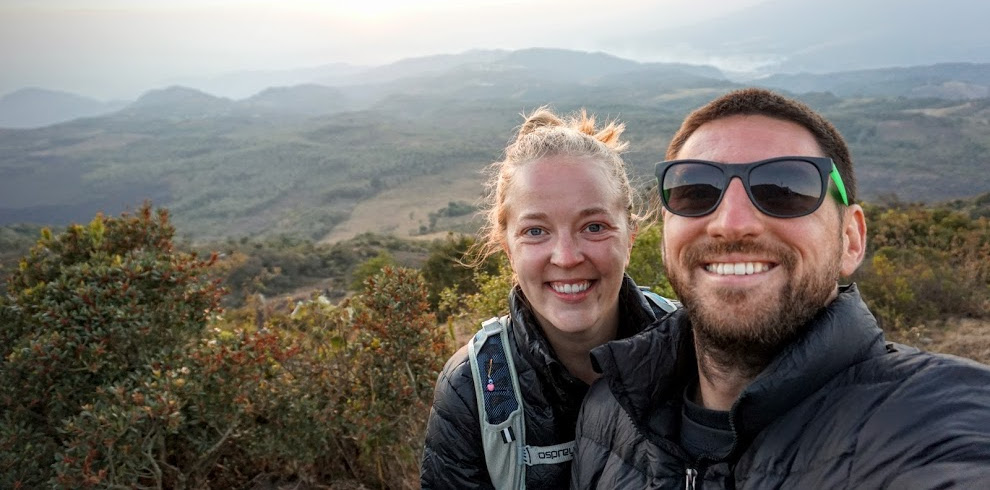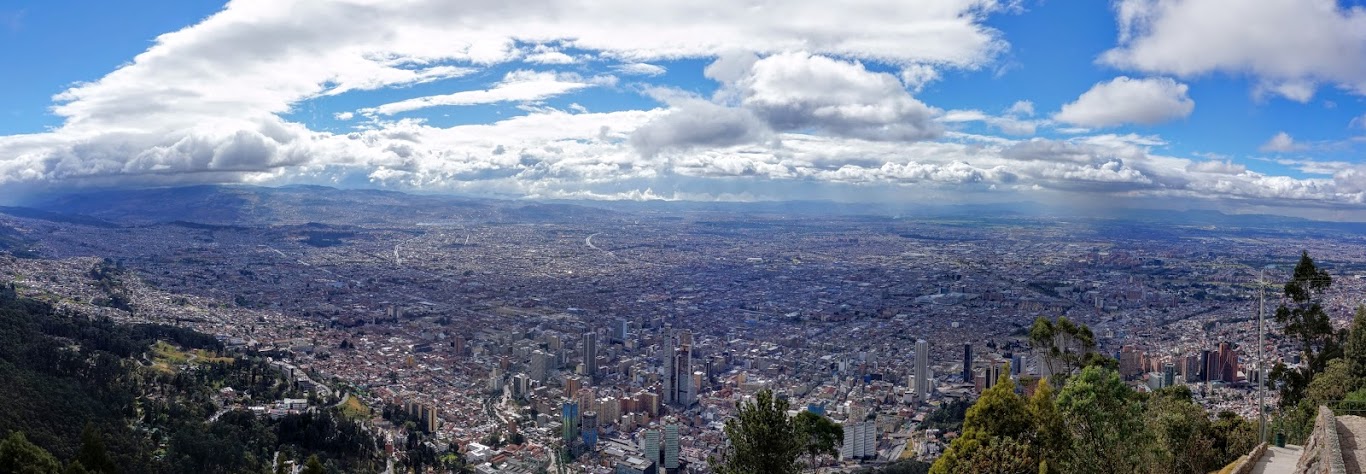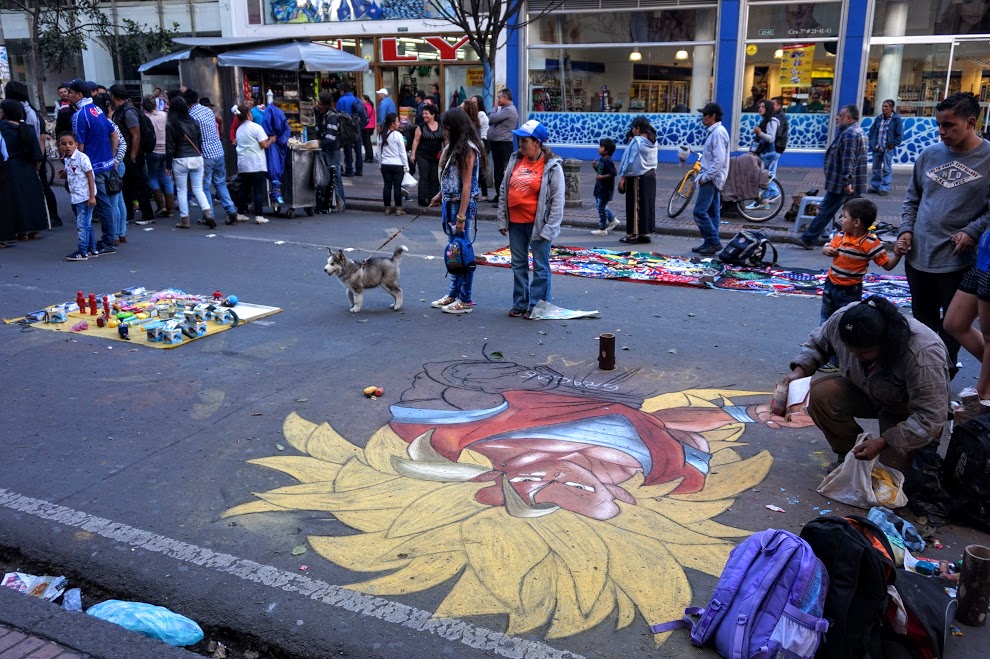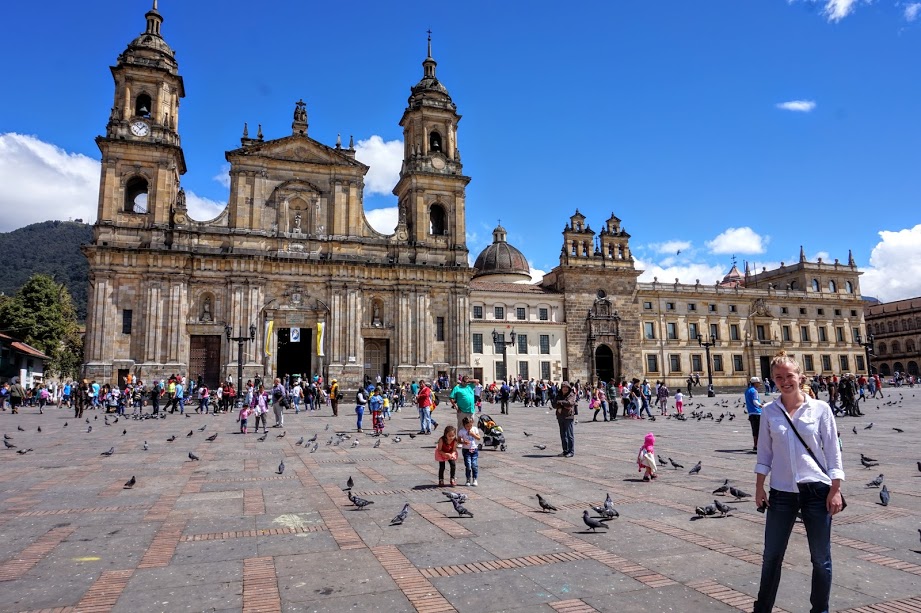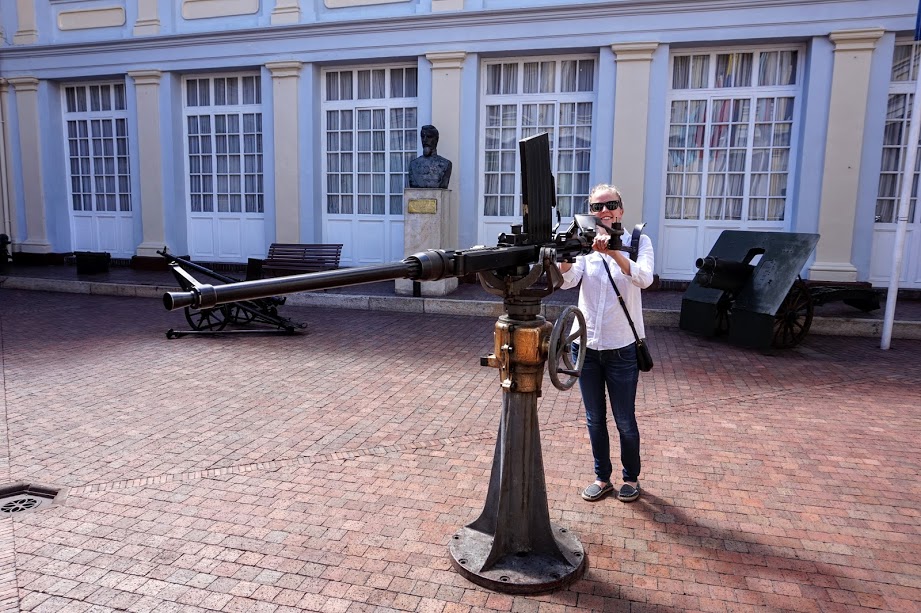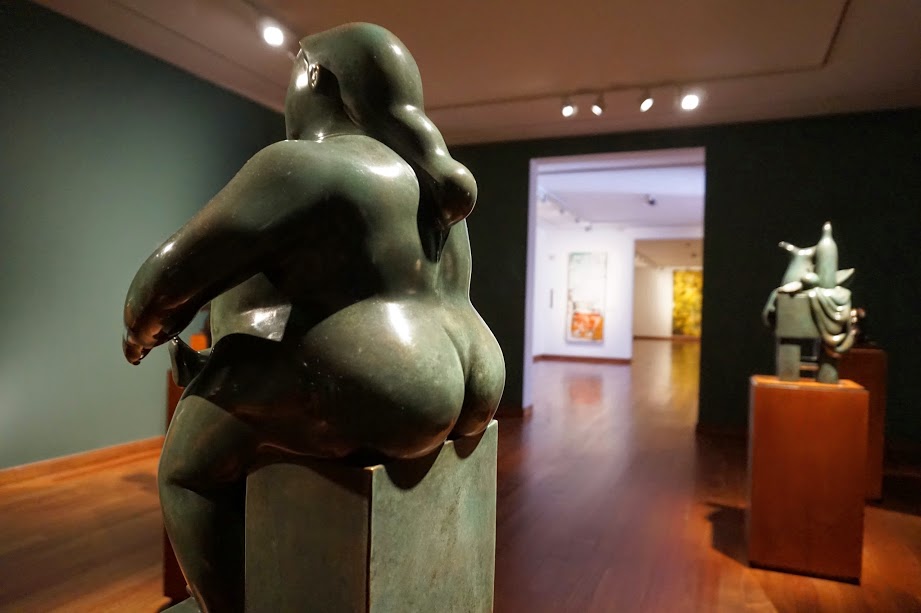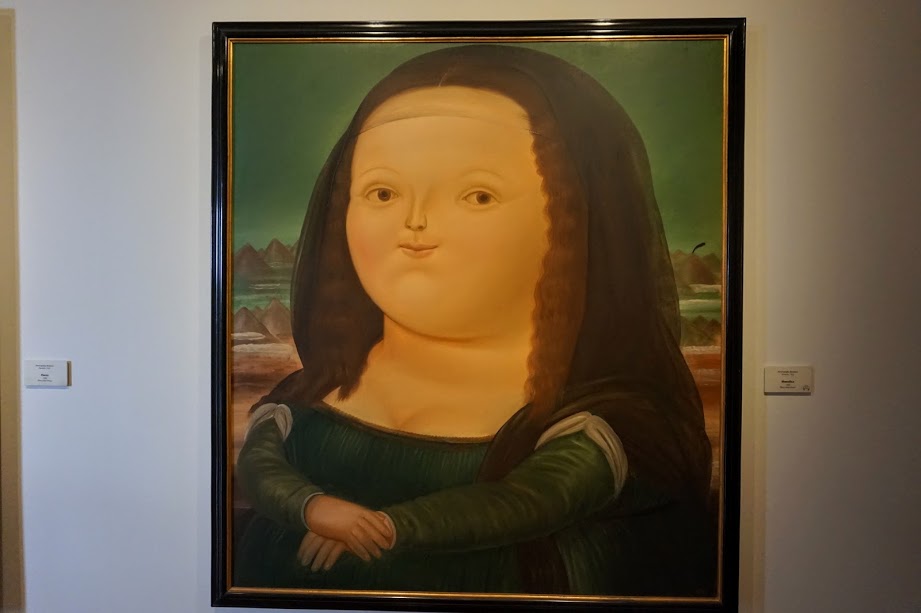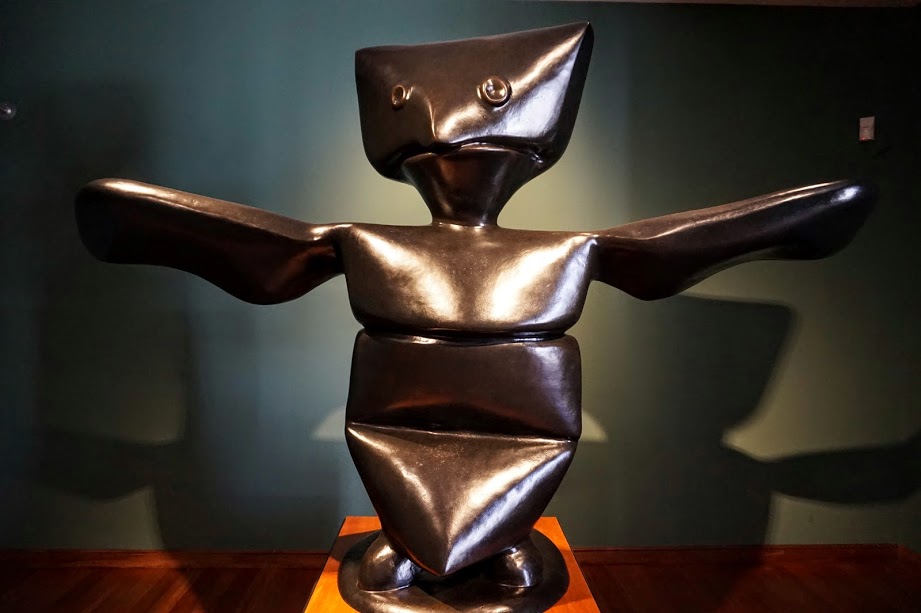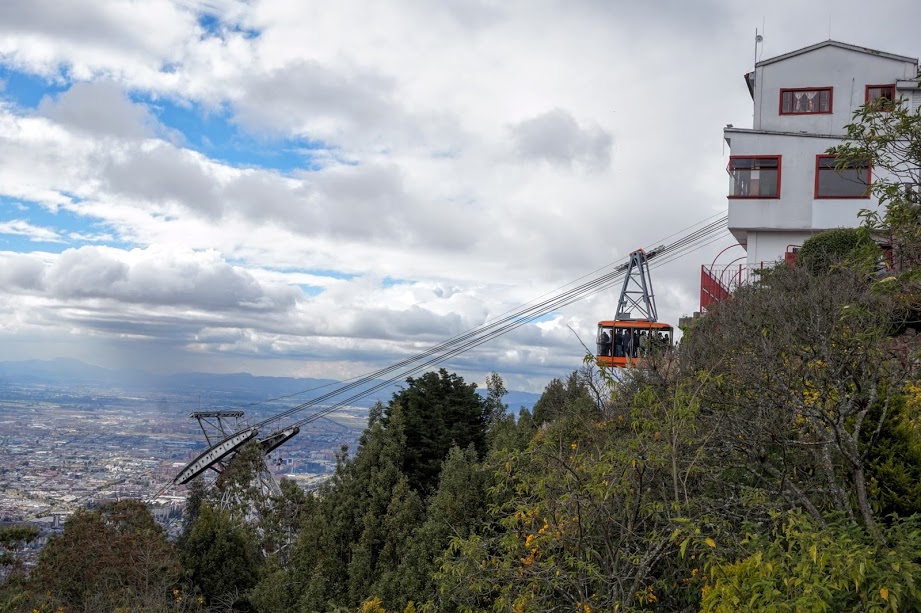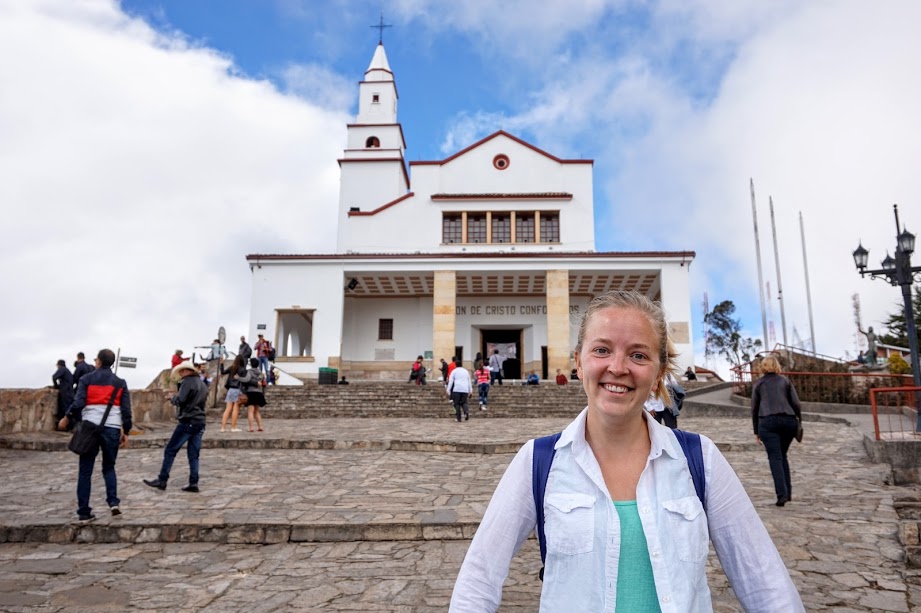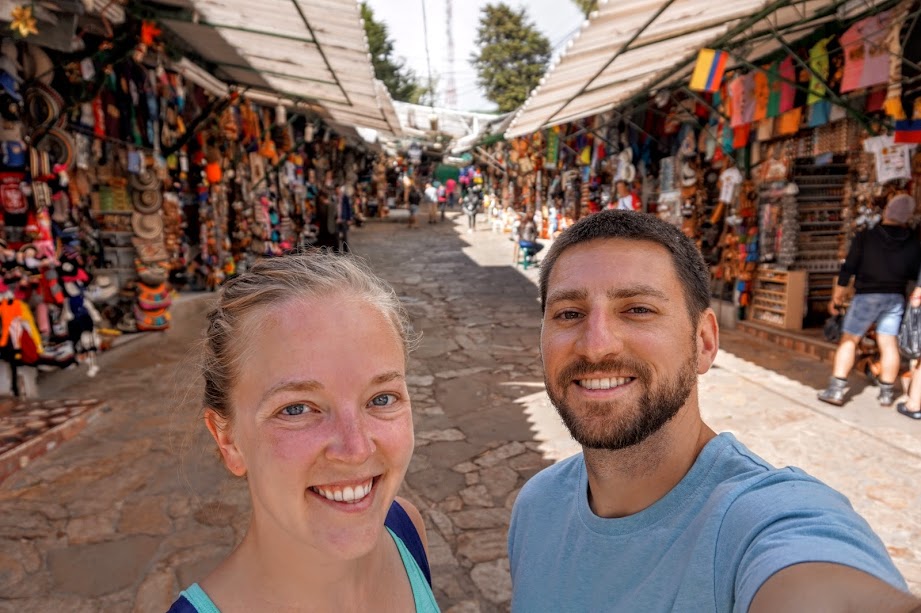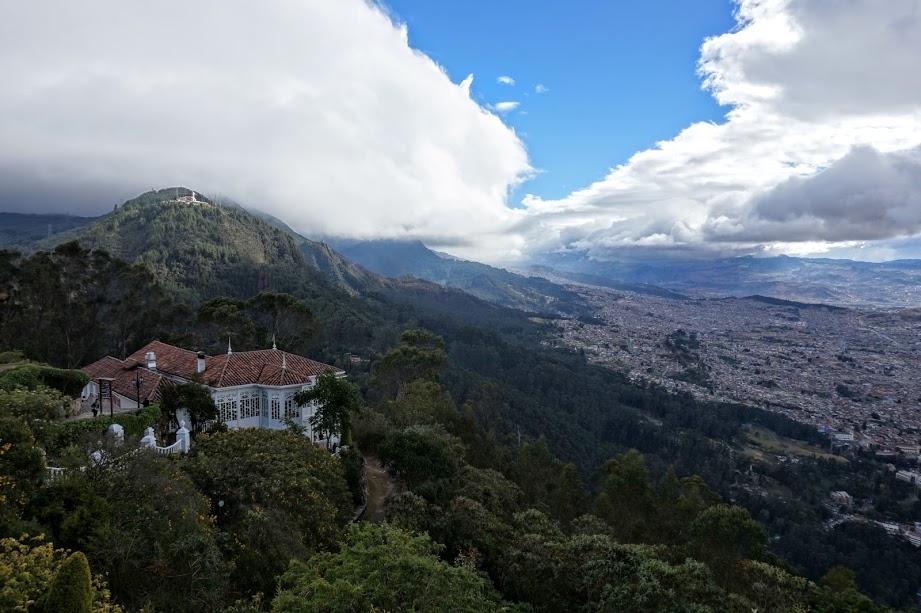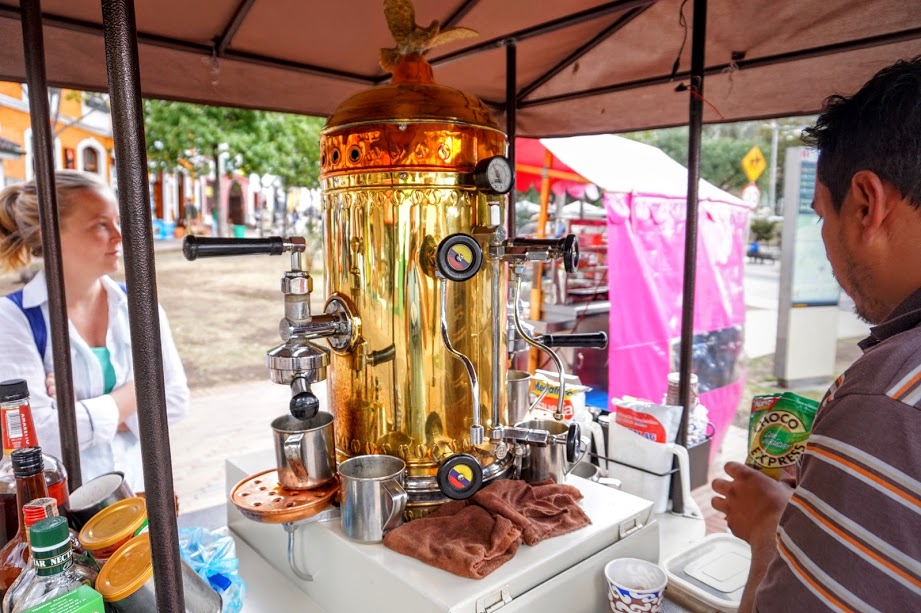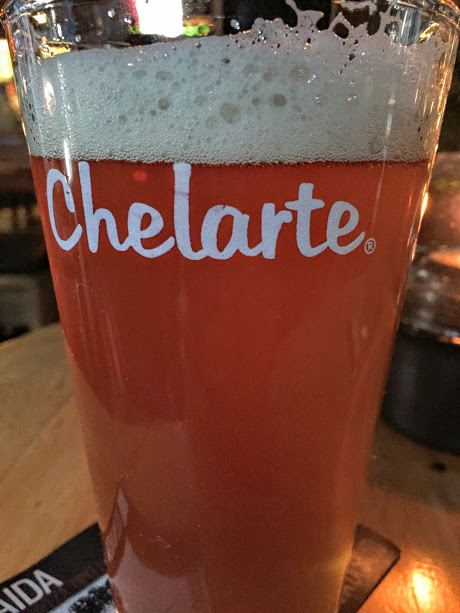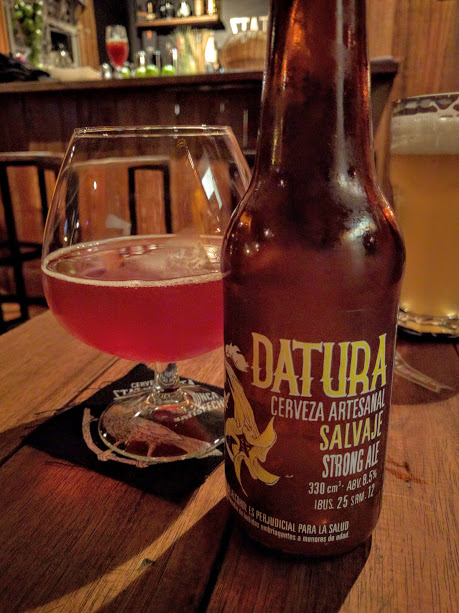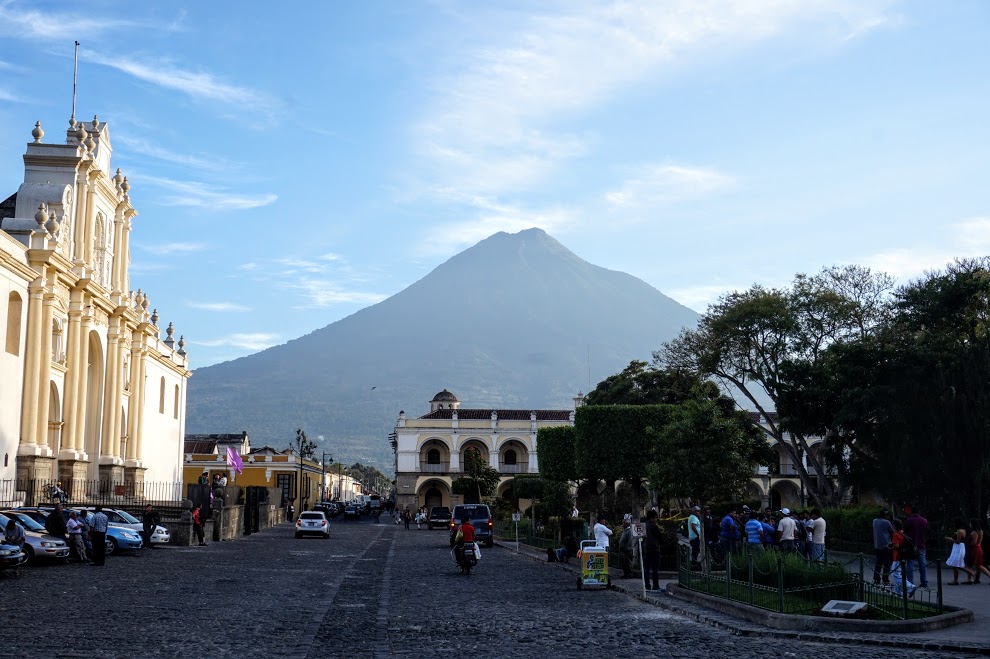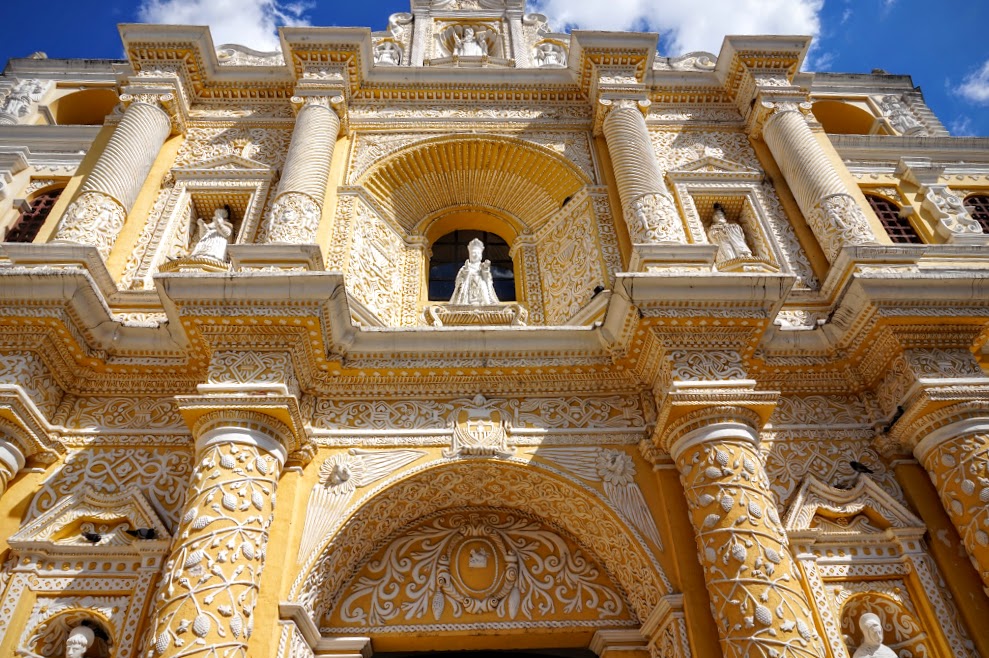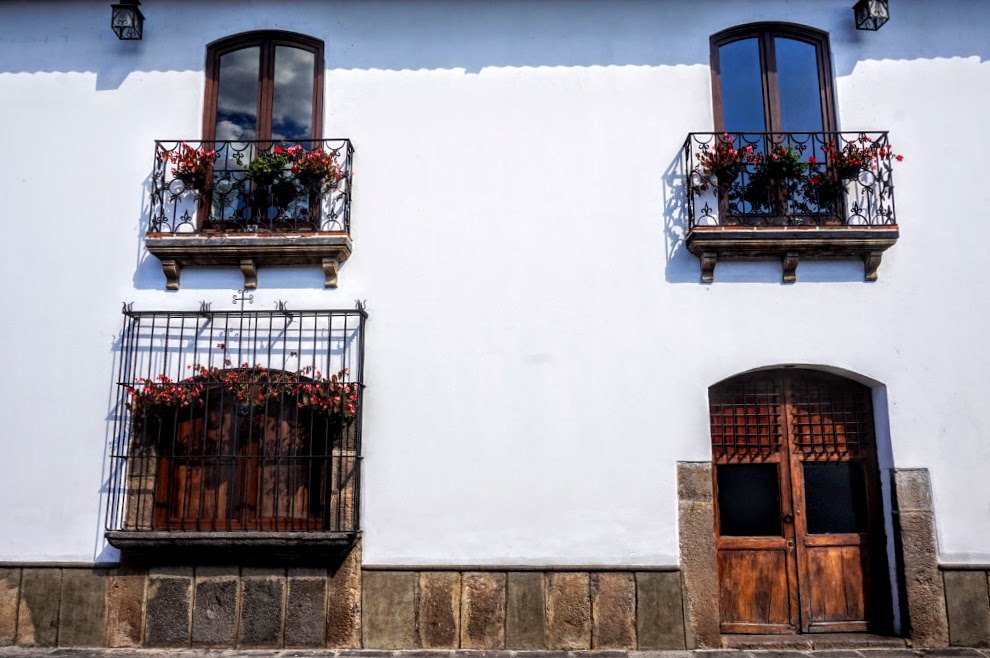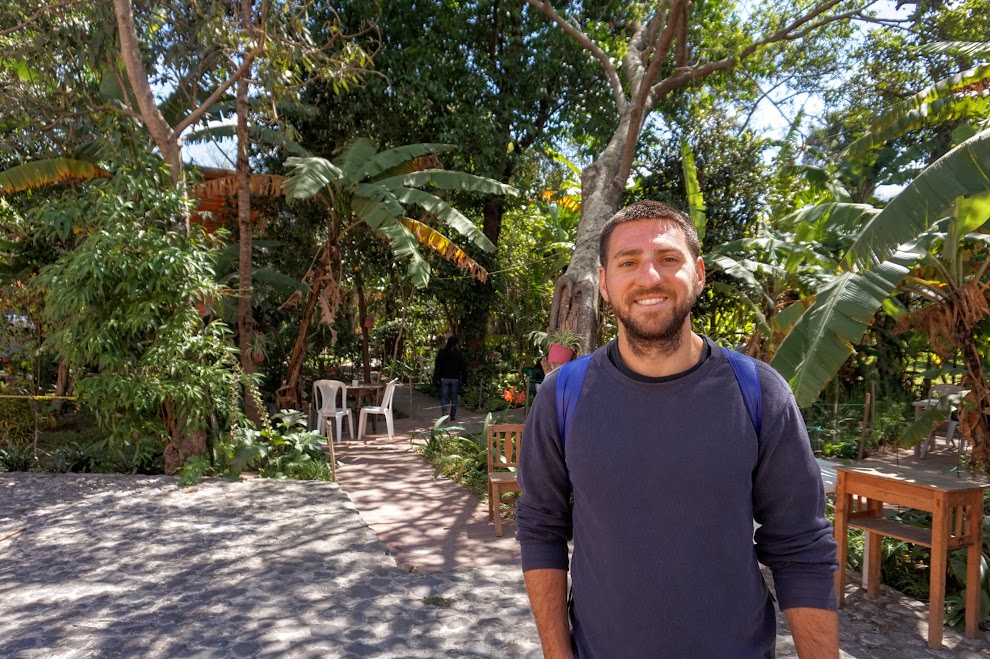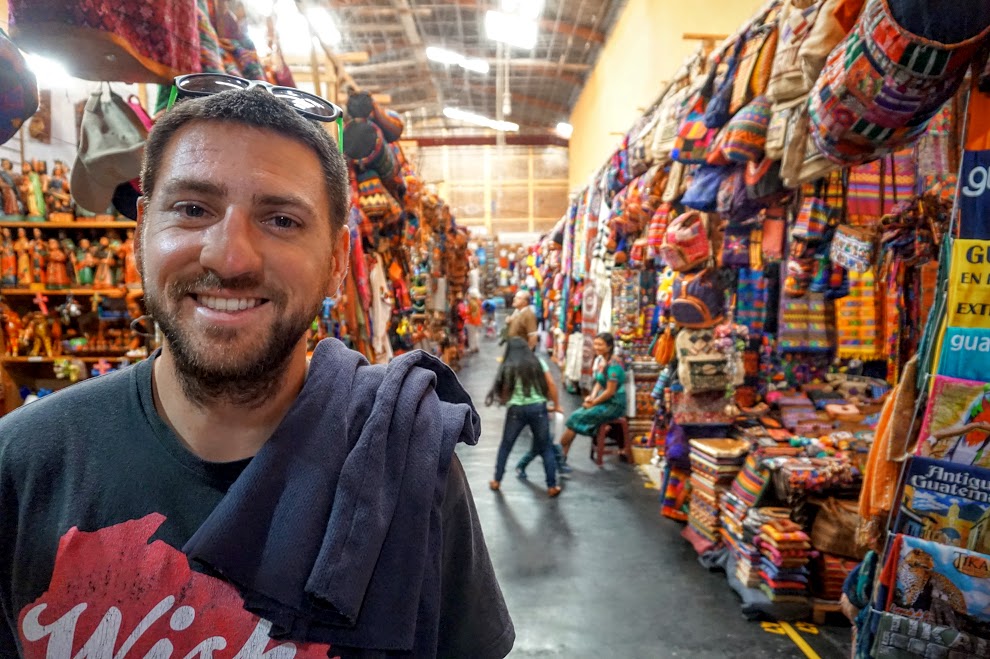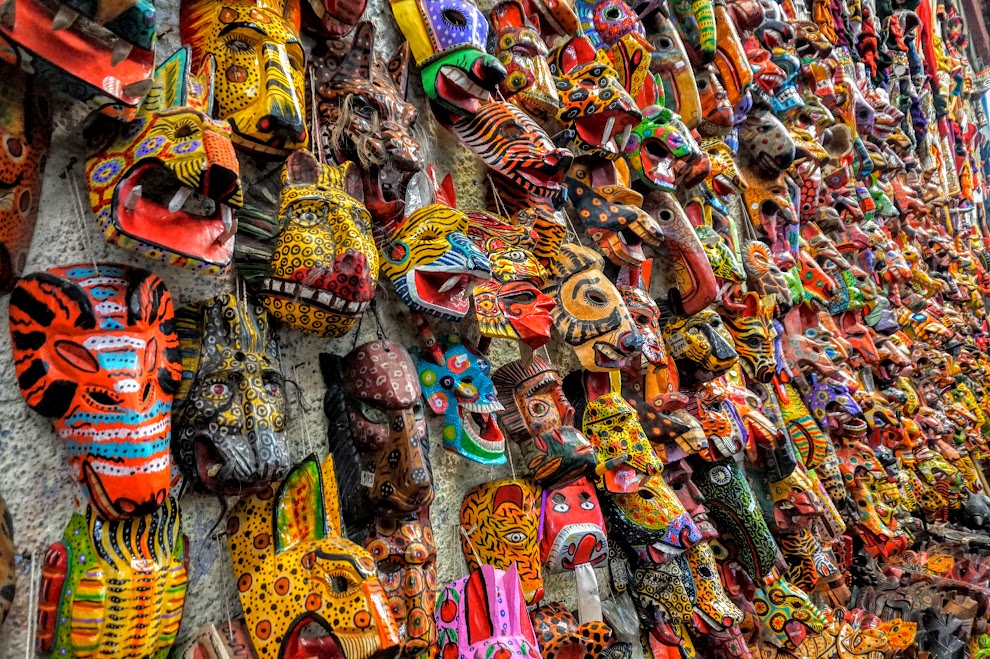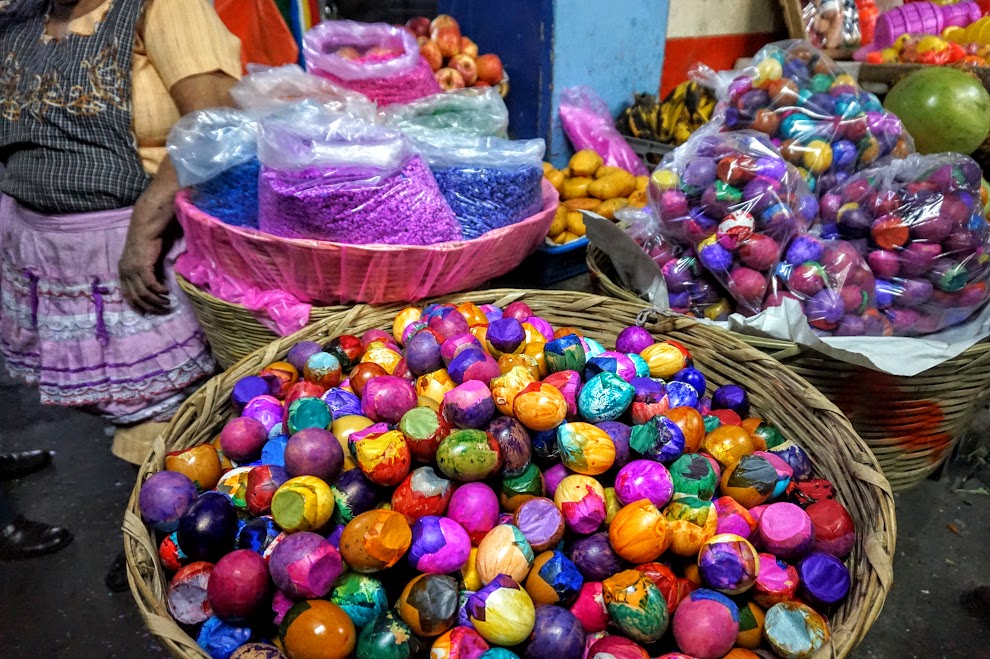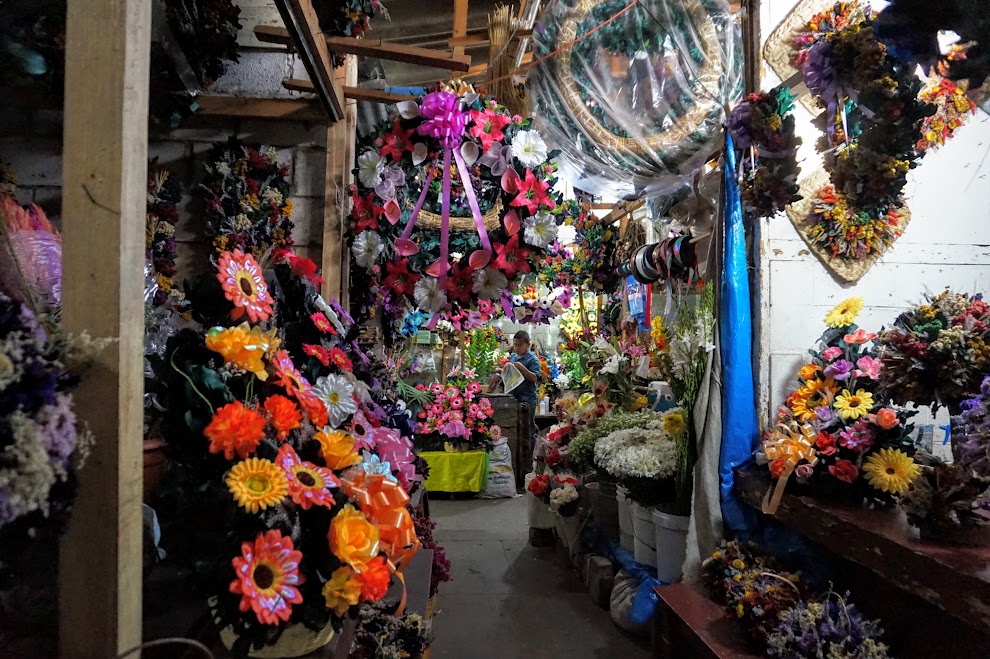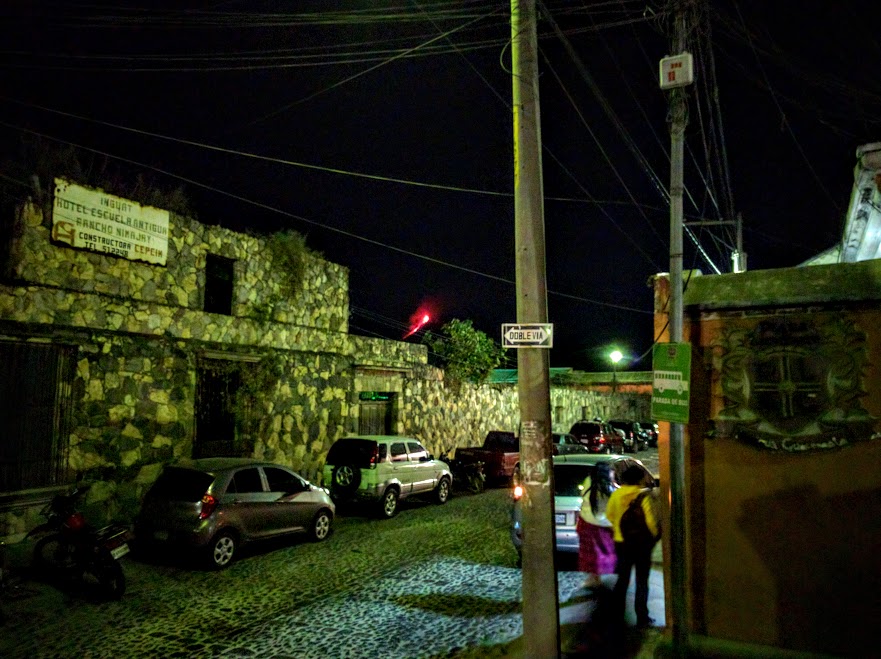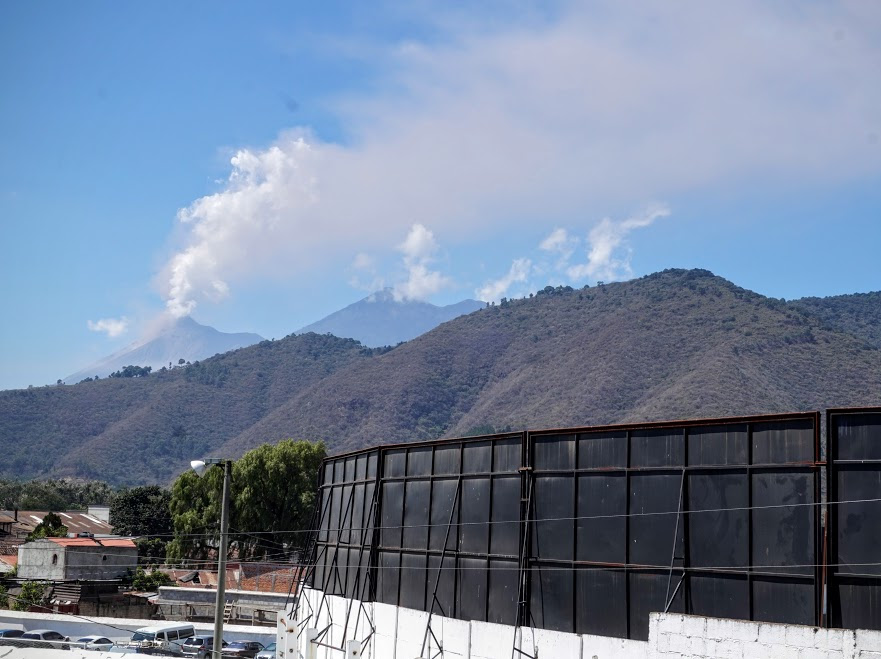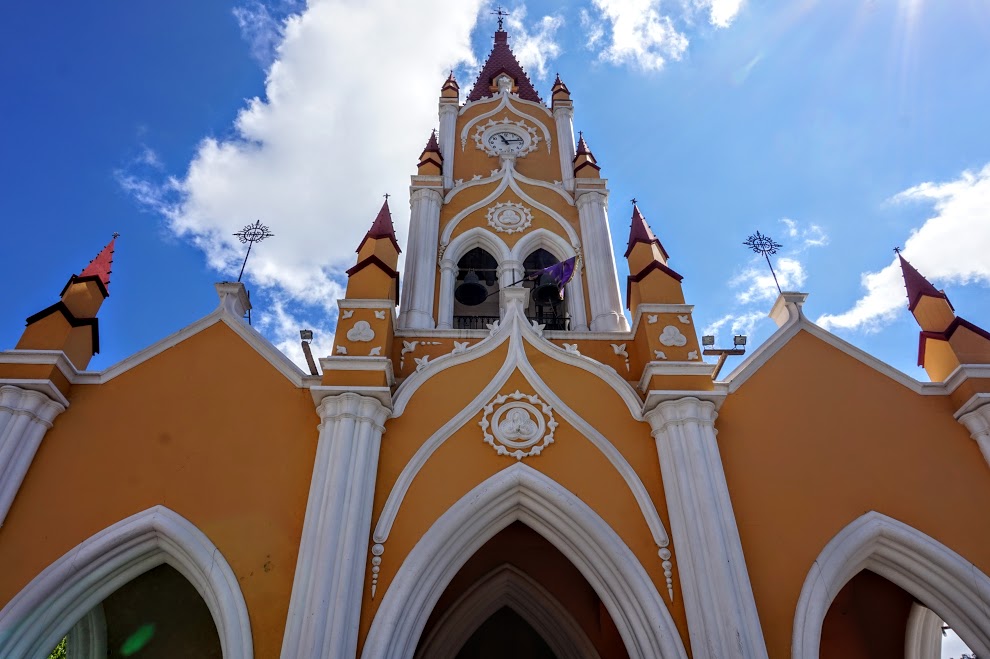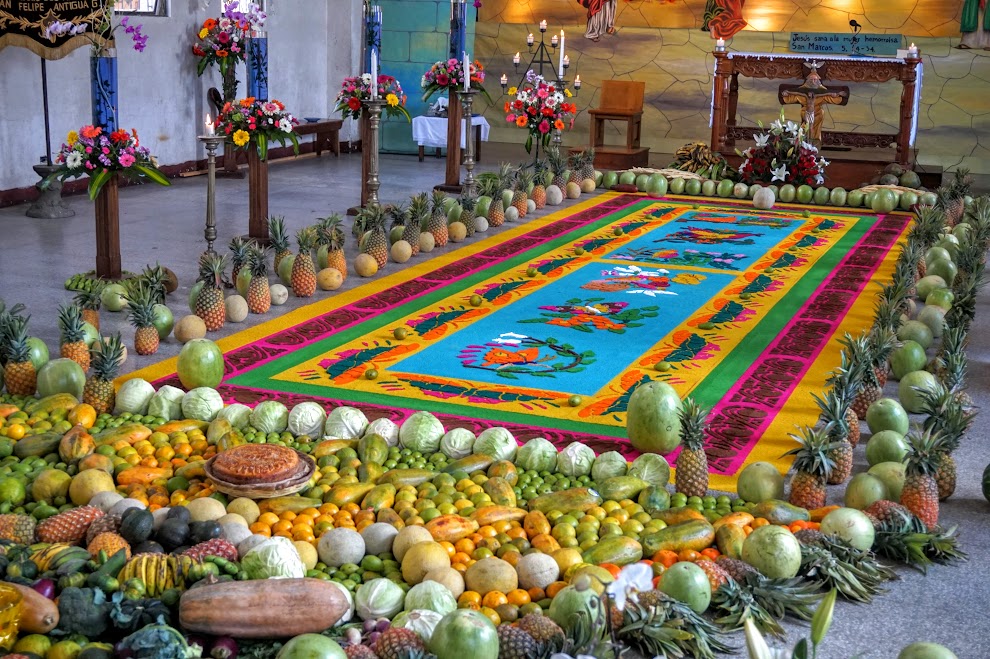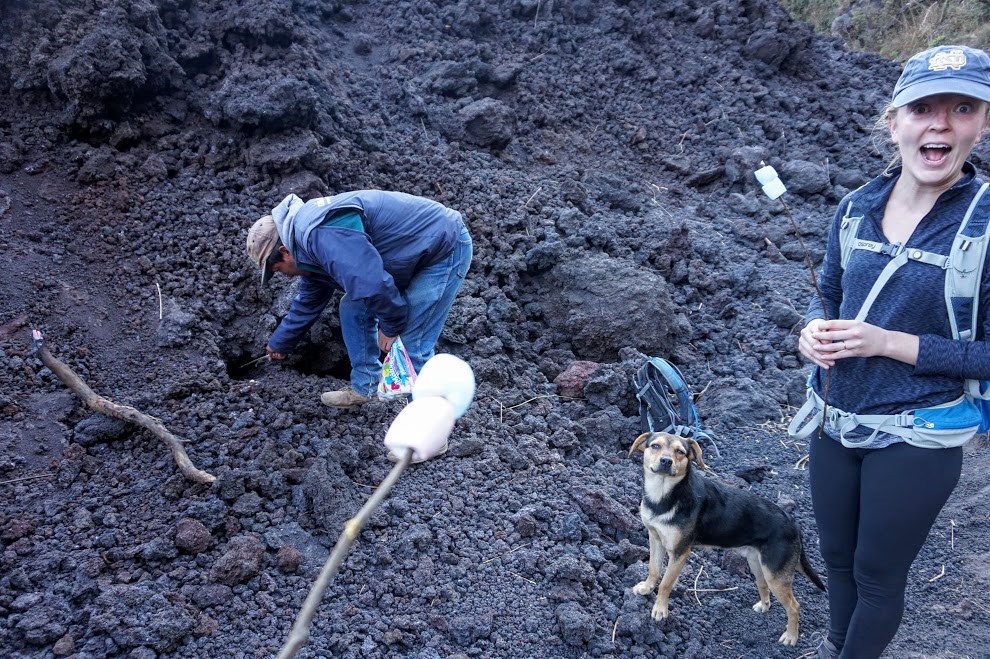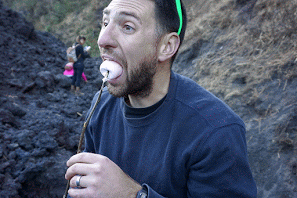We spent the past week volunteering at Los Monos, a monkey sanctuary near Puyo, Ecuador. Located 90 minutes east of Baños by bus, we arrived last Thursday evening completely unsure what to expect for our upcoming week. Our friend Anna had visited the sanctuary years ago and she suggested it might be a cool place to volunteer. We’d been planning to volunteer throughout our year of traveling and hanging out with monkeys for a week seemed like the perfect place to start!
When we arrived we met the other three volunteers from Germany and Belgium, the owner Yvan, and the resident biologist. Yvan gave us a tour of the park and introduced us to all of the monkeys, showing us some of the proper ways to greet them as to not show aggression accidentally.
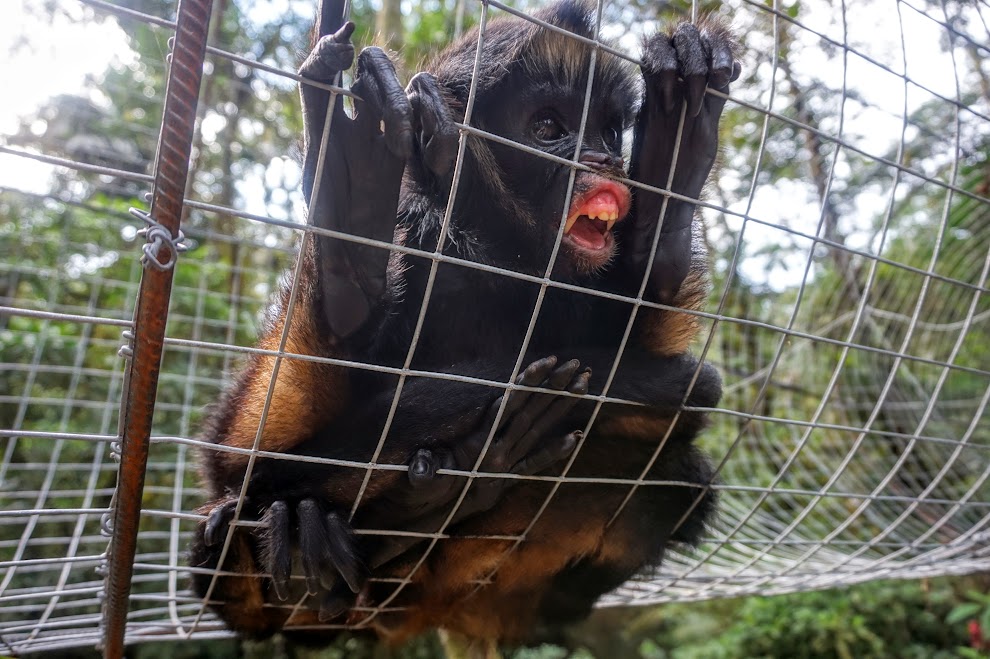
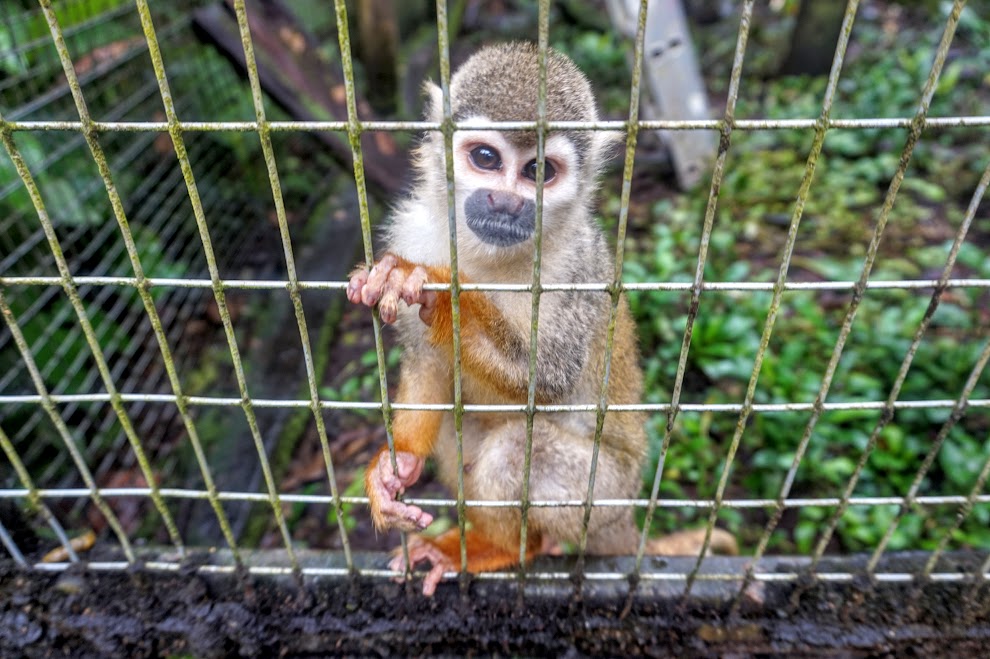
We should also mention that while the park’s focus was on monkeys, there were several other types of animals. In all there were:
- Woolly or Chorongo monkeys
- Capuchin or Capuchino Blanco monkeys
- Tufted Capuchin or Capuchino Negro monkeys
- Squirrel monkeys
- Spider monkeys (our favorites)
- Collared Peccarys
- Coatis
- A Margay named Misha
- A baby Kinkajou named Kinky
- Maria (we dont remember what animal, but looked like a Capybara)
- Various exotic birds, fish, turtles, and snakes
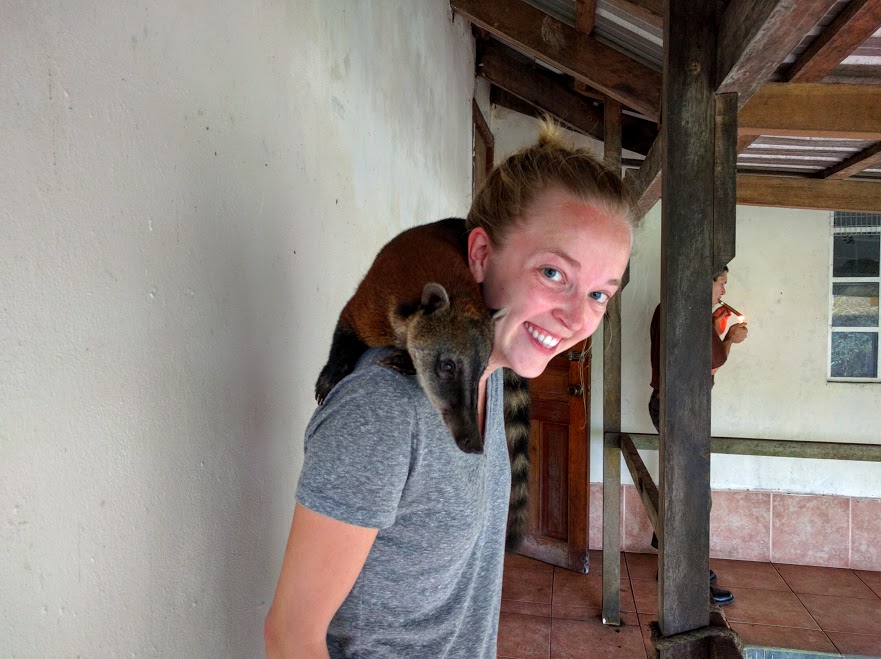
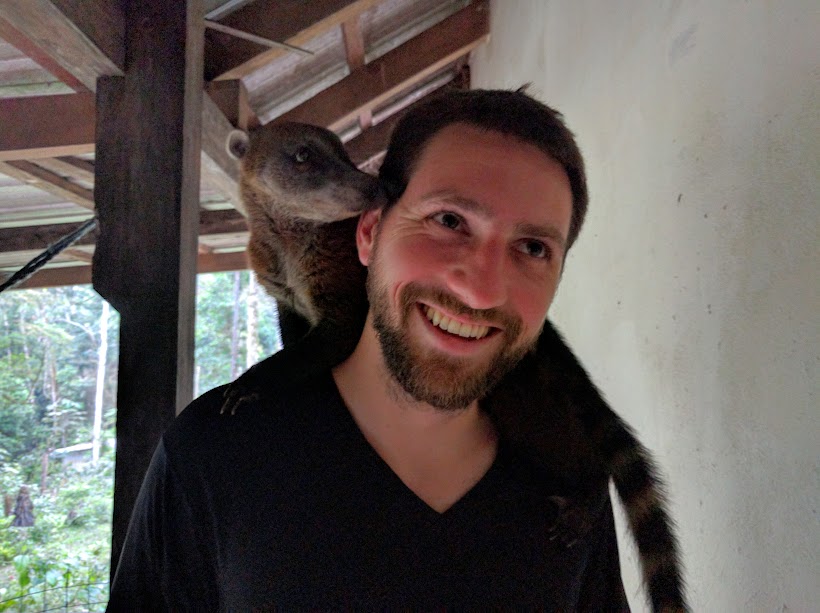
The next seven days usually followed this pattern:
- 8 am: Prepare the monkeys’ breakfast. We would chop up various fruits and veggies, then distribute the food throughout the park.
- 10:30 am: Human breakfast. Usually 1-2 volunteers would prepare the meal while everyone else was feeding the animals.
- 11 am - 2 pm: Varied day by day. One day we cleaned the aquariums, another we prepared beds for incoming volunteers, but mostly we spent our time building cage tunnels. More on that soon.
- 2 pm: Second feeding of the day for the animals!
- 3 - 5 pm: Lunch for us after the animals were fed, then more chores and/or building cage tunnels.
- 5 pm: Quitting time! The evenings we had free, and we usually spent them just relaxing, reading, playing cards, and watching Laura smash cucarachas.
Our only real complaint about the week was the bugs, but hey, its the rain forest so what do you expect? The good news is that after a few days we were both a lot more ok with them, and eventually Laura made good sport of stomping on the cockroaches. I am told that when baby cockroaches are bad, their parents tell them tales of “Laura: the Hammer.”
Now what are these cage tunnels you ask? Although there are several large enclosures throughout the park for most of the monkeys, three groups of monkeys are confined to cages. Two of these cages already had “tunnels” (aka chain link tubing suspended from trees) for the monkeys to run through and spend some time out of their main cage. The third group of monkeys didn’t have a tunnel to run through, so most of our time was spent assembling cylindrical tubes. The last two days we spent hanging them in trees, and our final morning we opened the monkeys’ cage up and watched them explore their new tunnel! While feeding monkeys was pretty cool, it’s even more awesome to be able to say we actually left a permanent mark on the park in the form of providing monkeys a new place to play. Some of our pictures were featured on their website. You can read more about it at LosMonos.org.
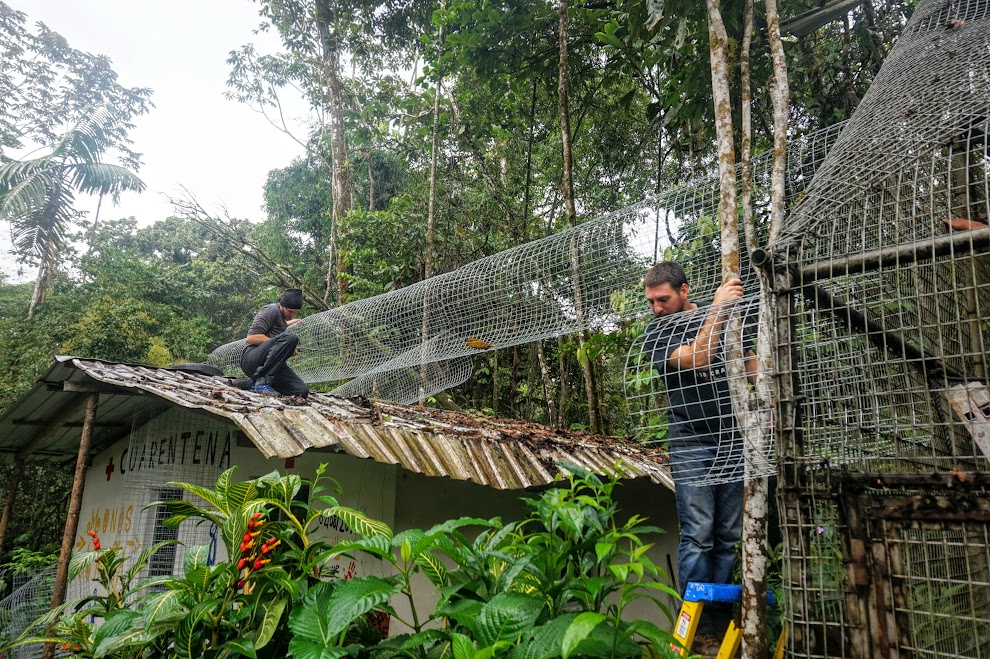
What else did we get out of it? We learned to be more ok with bugs, practiced a lot of Spanish, tried Ayahuasca for the first time, and survived without internet for a whole week! We had a great time, met awesome people, and will definitely be trying some other volunteer opportunities soon.
